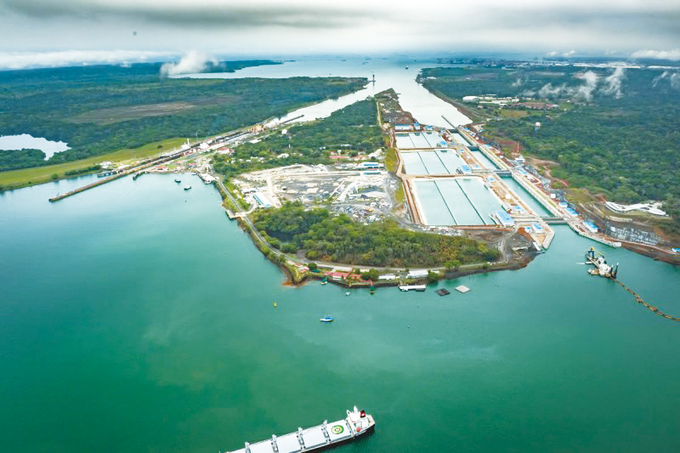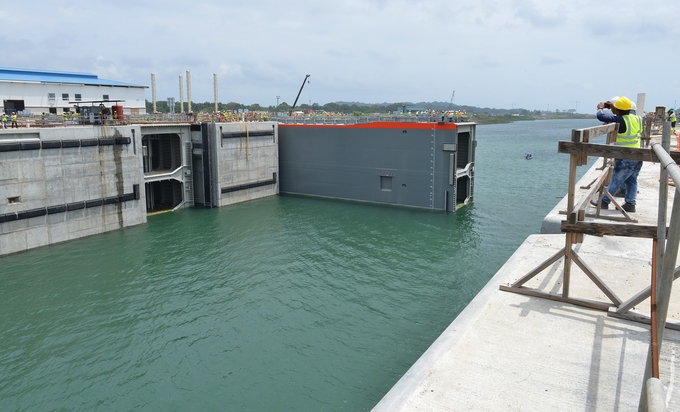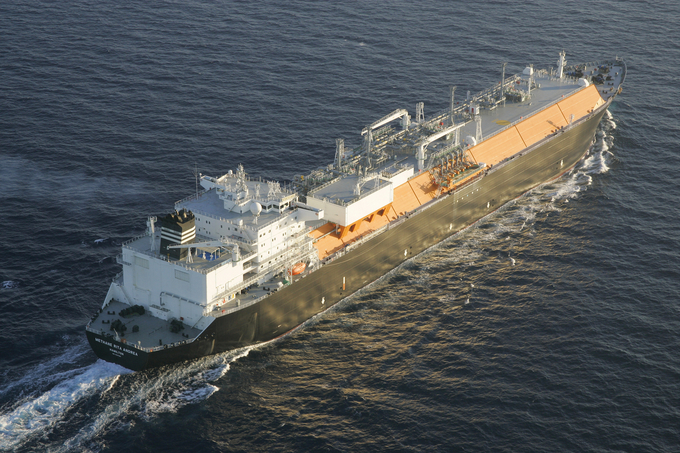
Panama said it expects 20 million tons of liquefied natural gas to pass through its canal annually once the newly widened waterway is opened this month. That’s almost a tanker of gas a day traveling through, based on Bloomberg calculations.
“The canal opens the possibility for that gas to reach Asian markets in a more competitive way because the Panama Canal route is the shortest,” said Manuel Benitez, deputy administrator of canal authority, in an interview in Panama City on Wednesday. “We’ve already seen that many very large gas carriers have already made reservations.”
The $5.3 billion expansion to the canal is set to be inaugurated June 26, allowing it to handle the kind of massive tankers that transport liquefied natural gas. Its debut is fortuitous for U.S. gas producers as the shale boom has sent domestic supplies surging and drillers are looking to get their fuel to markets abroad.
The expanded canal will help U.S. gas producers by cutting the shipping time to markets in Asia, according to Skip Aylesworth, who manages $1.5 billion in holdings at Hennessy Funds in Boston, and who holds shares in LNG producer Cheniere Energy.
“It helps the shipping company if you can cut ten days rather than going around South America,” Aylesworth said Wednesday in a phone interview. “It is more profitable for the shipper and that’s good for Cheniere.”
The volume projected by the Panama Canal Authority represents about 8 percent of global LNG trade and is equivalent to nearly 300 ships a year, said Bloomberg New Energy Finance analyst Anastacia Dialynas. Next year the U.S. will export about 8 million tons, she said. Prices in the Pacific aren’t currently high enough to create a large arbitrage opportunity to send gas from the U.S. Gulf Coast to Asian markets, according to Madeline Jowdy, director of global gas and LNG at PIRA Energy Group in New York. LNG prices in Asia and Europe have plunged in line with oil prices, the surge of new gas export capacity and weakening demand from China and other Asian markets.

“Most of the LNG produced in the U.S. will remain in the Atlantic Basin for the foreseeable future because of the price collapse and the sheer amount of volume that is going to be appearing in Asia,” Jowdy said. “There are no arbitrage opportunities.”
Total shipping passing through canal will rise to 389 million tons next year, from 336 million tons this year, according to Benitez. The number of ships going through per day will drop to 30-31, from 34-36, as shipping companies send through bigger vessels, he said. The canal forecasts that its revenues will rise 17 percent to $2.8 billion next year.
(Source : Bloomberg)

















